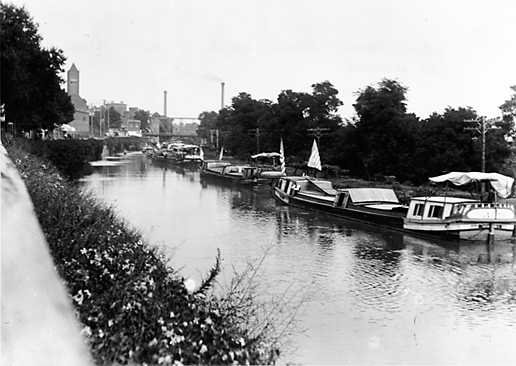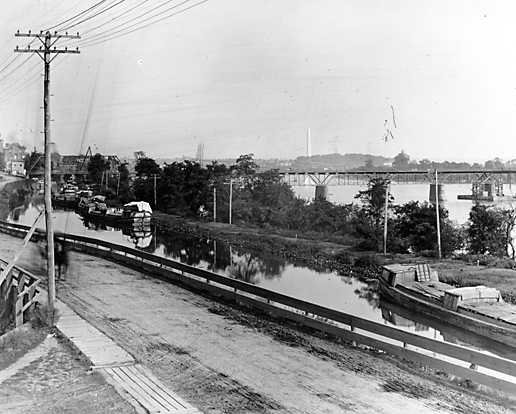
Canal History
George Washington dreamed of a canal that stretched from the Potomac to the Ohio River Valley - connecting the east to the west. A groundbreaking ceremony took place on July 4, 1828. Washington eventually got his wish in name, but not in practice - the Chesapeake & Ohio Canal (C&O Canal, as most refer to it today) stretching 184.5 miles to Cumberland, Md., by the time it was completed in 1850.
The Canal operated for nearly 100 years, initially serving as the main method of transportation for coal, lumber, and agricultural products as they made their way to markets along the Potomac River. Carrying both cargo and passengers, the Canal boats of the mid-to-late 1800s were pulled by mules who walked along the towpath - harnessed to the boat with ropes.
Flooding periodically damaged the Canal and rendered it temporarily inoperable. When another significant flood occurred in 1924, railroads had already revolutionized transportation in the United States, and the waterway closed as a business enterprise.
Three decades later, the Canal was in disrepair, and Congress was eager to fill it in and create a parkway for automobiles. Thanks to passionate preservationists, the parkway never materialized. The Canal was designated a National Historical Park in 1971.
Today, the C&O Canal is one of the most impressive surviving examples of the United States’ canal-building era. To learn more about this history, we invite you to attend one of our upcoming tour experiences. Please click here to learn more!
READING LIST
For further reading on the history of the C&O Canal and Georgetown, please consider these sources:
C&O Canal History
National Park Service C&O Canal History
National Park Service Park Histories
National Park Service C&O Canal Photos and Videos
The C&O Canal: From Great National Project to National Historical Park
The C&O Canal Companion: A Journey Through Potomac History
The Grand Idea: George Washington’s Potomac and the Race to the West
Secrets of the C&O Canal: Little-Known Stories and Hidden History Along the Potomac River
Georgetown History
Citizen’s Association of Georgetown History of Georgetown



